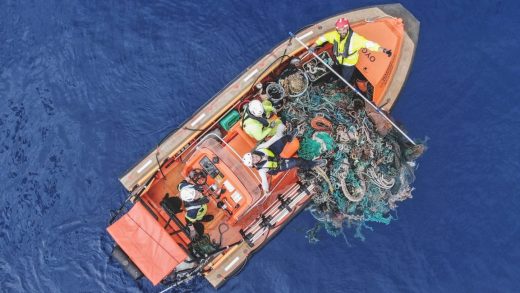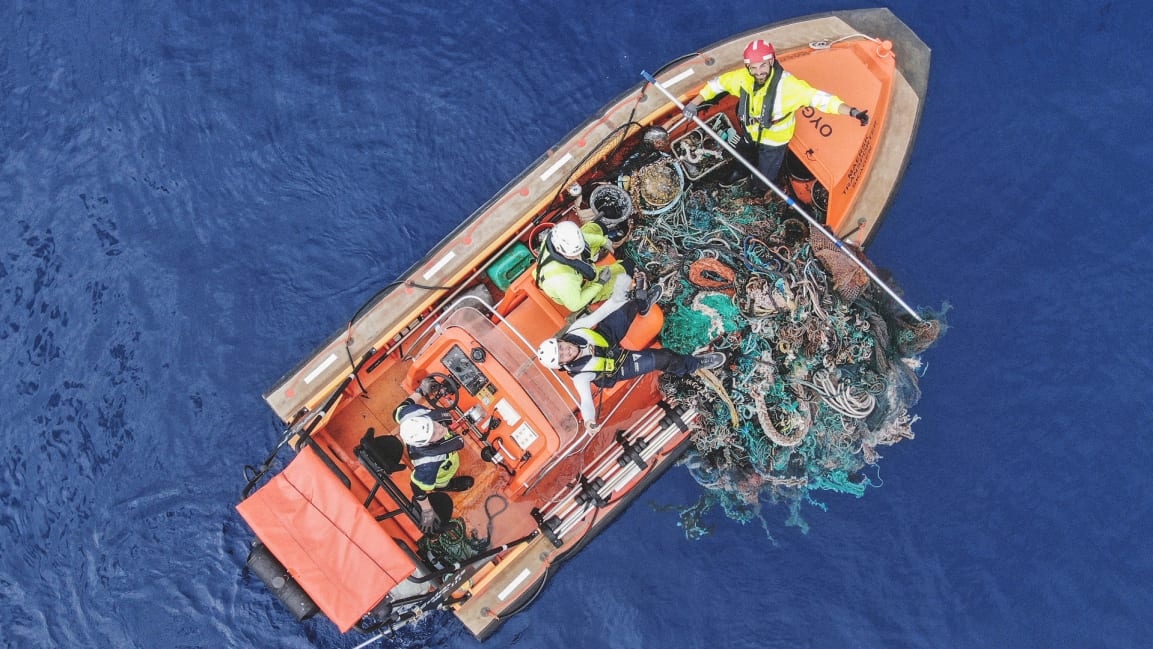The giant Ocean Cleanup device is having some trouble cleaning up the ocean
In the middle of October, a nearly 2,000-foot-long floating device designed to capture plastic trash in the ocean arrived in the Great Pacific Garbage Patch, halfway between California and Hawaii. It was the beginning of a first-of-a-kind experiment: Could new technology help remove the 1.8 trillion-plus pieces of plastic that float in the area?
The crew of The Ocean Cleanup, the Netherlands-based nonprofit deploying the device, successfully installed the beta system into a U-shape. The system uses a huge floating pipe, with a “skirt” attached below it, both designed to move with the wind and waves collecting plastic–in theory. In practice, the device hasn’t worked yet.
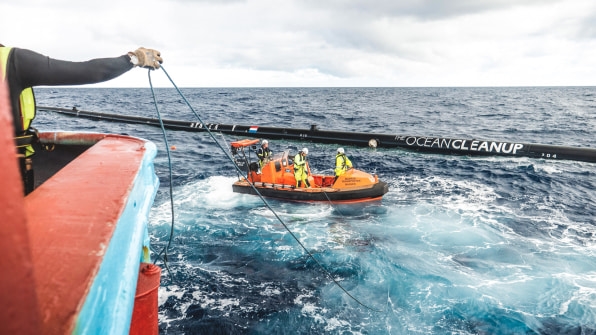
“The main principle behind the cleanup system is to have a difference in speed between the system and the plastic so that it goes faster than the plastic, and you can collect it,” says Boyan Slat, CEO and founder of The Ocean Cleanup, who first conceived of the device as a teenager and then raised money to make it a reality. “What we see now, however, is that the system is not moving fast enough. There’s multiple hypotheses for that.”
The crew plans to try making the opening of the u-shape wider, so a greater surface area will be exposed to the wind and waves that push it through the water. Widening the span could also help reduce any fishtailing of the ends of the pipe, which engineers also hypothesize might be slowing it down. As soon as the weather allows, the crew plans to remove rigging lines that are currently in place, which may be slowing the system down because of their weight.
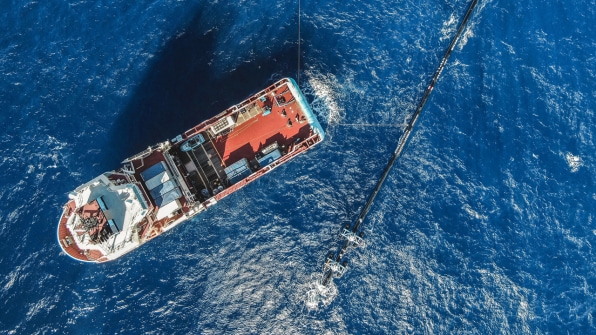
If the system can successfully be tweaked offshore, Slat says, it may still be possible to bring the first harvest of ocean plastic back to the West Coast by next spring, on schedule. If the fixes turn out to be more complicated, the crew may need to move the system back into sheltered waters to be able to safely work on it, adding a few months to the process. But Slat says that he is still “highly confident” that the device will work. The system has otherwise worked as planned, forming the expected shape in the water, and not interfering with marine life in the area. “All the major things that we actually foresaw most challenges with, we’ve been able to confirm those [are not problems],” he says. “In principle, the concept isn’t in trouble, it’s really just, How do we speed it up?”
One way to increase the system’s speed could be to add motors to move it, though Slat says that would be a last resort. “The main elegance behind the design is that you don’t need active propulsion, because that would add so much complexity, cost, and maintenance requirements,” he says. He believes that the challenge can be solved in other ways.
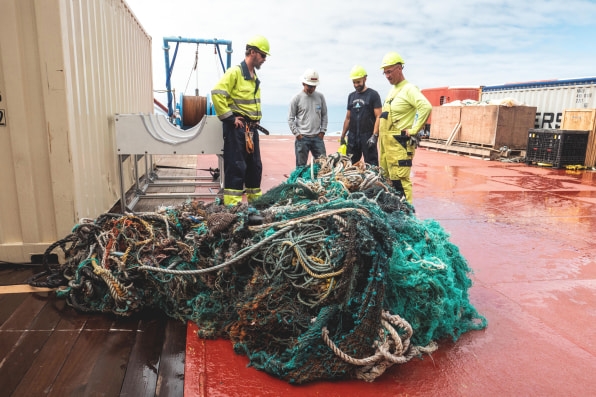
The problem of speed didn’t show up in scale model tests or simulations. “It stresses why it’s so important that we’re out there now with a real system, with the real scale, because models are models, and there’s no substitute for reality,” he says. It’s a major problem to solve, though Slat says that it’s “probably the thousandth that we’ve faced” since starting the project, and the fact that the team has overcome many other major challenges gives him confidence.
If it does ultimately work, it will be a critical step for the environment. Even as companies like PepsiCo and Unilever begin to ramp up efforts to cut plastic waste from their own packaging, it will take time to shift away from a system that currently results in at least a garbage truck’s worth of plastic dumped in the ocean every day. Even if that flow of trash stopped immediately, the ocean is already filled with trash, and it’s already killing marine life, like a dead sperm whale that recently washed up in Indonesia with 13 pounds of plastic in its stomach, including 115 plastic cups, 25 plastic bags, and two flip-flops. Much of the plastic in the Great Pacific Garbage Patch, the Ocean Cleanup team found, is still in larger pieces, which are important to remove before they break into tinier pieces that are more likely to be eaten by fish and other animals. “It’s this problem that’s waiting out there to magnify many times unless we can take it out,” Slat said in an earlier interview with Fast Company.
(34)

